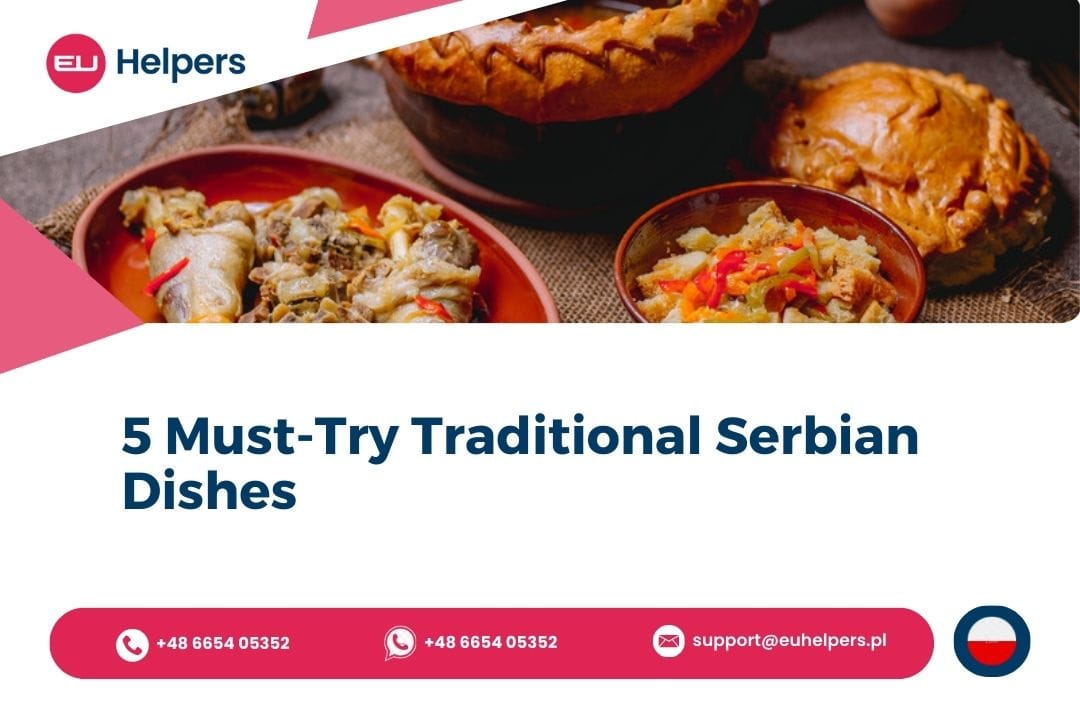Let us introduce you to Serbian cuisine, a delightful blend of diverse influences and cultures. This unique mixture incorporates elements from Turkish, Mediterranean, and Austro-Hungarian culinary traditions, reflecting the country's rich history. Whether you're a dedicated foodie or simply enjoy good food, Serbian cuisine offers something to please every palate. Continue reading to discover another compelling reason to choose Serbia as your study destination.
Prebranac
We begin with a vegetarian dish known as prebranac. This Serbian version of baked beans is rich and comforting, with each family having its own special recipe. Typically, it is prepared using onions, carrots, garlic, and white kidney beans. The beans are soaked overnight in ample water, then drained, rinsed, and cooked until tender. While the beans cook, diced onions and garlic cloves are sautéed, seasoned with salt, black pepper, and sweet paprika. Once the beans are ready, they are mixed with the sautéed vegetables and baked in the oven at a low temperature. For an authentic taste, it is recommended to use dry beans instead of canned ones.
Karadjordjeva Schnitzel
For meat enthusiasts, Karadjordjeva schnitzel is a must-try. This dish is reminiscent of Wiener schnitzel, an Austrian classic of breaded, pan-fried pork cutlets, but with a Serbian twist. The cutlets are stuffed with kajmak, a creamy, buttery spread popular in Serbia, then breaded and deep-fried. Alternatively, chicken tenders can be used. Named after Karadjordje, the leader of the First Serbian Uprising against the Ottoman Empire in 1804, this dish is a favorite among locals and visitors alike.
Šopska Salad
If you enjoy Greek salad, you’ll love the Serbian Šopska salad. This dish consists of chopped tomatoes, cucumbers, onions, and a block of soft cheese. Unlike the Greek version, Serbian Šopska salad rarely includes olives due to the local climate. Additionally, Serbians often add diced chili peppers, either yellow or green, for a spicy kick. The salad is finished with a drizzle of vegetable oil and a sprinkle of salt.
Sarma
Sarma is a beloved dish across many countries, each with its own version. In Serbia, sarma is made from pickled cabbage leaves stuffed with a mixture of vegetables and meat, then cooked slowly for several hours. The stuffing typically includes sautéed ground pork or beef (or both), diced onions, garlic, and grated carrots. Rice is also added, along with seasonings such as salt, black pepper, paprika, and bay leaves. Bacon may be included in the stuffing or layered between the rolls, adding extra flavor.
Ajvar
During autumn, Serbians engage in pickling fresh vegetables and preparing various salsas and salads to enjoy throughout the winter. Ajvar is a popular type of preserved food made from roasted or grilled red peppers and garlic. The peppers are roasted over an open flame, peeled, chopped or minced, and then fried with diced garlic in vegetable oil. The resulting mixture can be used as a spread or served alongside other dishes and meats.
Beyond its excellent educational opportunities, friendly and welcoming people, vibrant cities, and rich culture, Serbia also offers delectable cuisine. Additionally, the country is affordable and ideally situated in the heart of the Balkans, making it an attractive destination for students and travelers alike.

